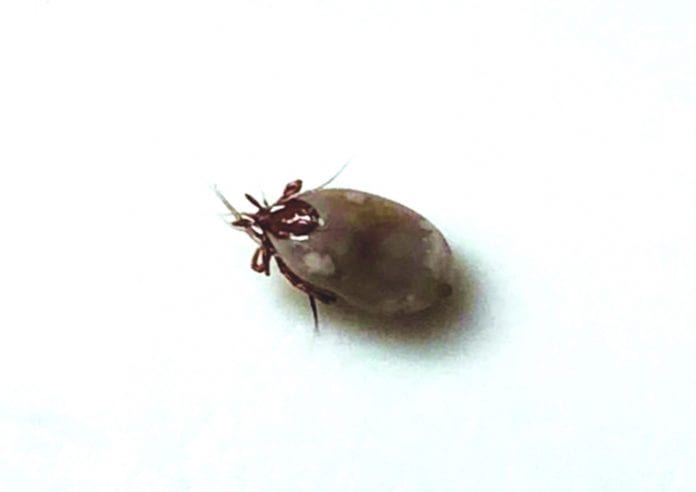
Veterinarians and researchers in Alaska are getting more calls these days about those small arachnid parasites known as ticks, and yes, some of them are native to Alaska.
Cordova resident Josh Steele found a tick on his 14-week-old chocolate lab on June 9, successfully removed it, and plans to send it on to the state veterinarian’s office in Anchorage to test for pathogens.
According to Micah Hahn, assistant professor of environmental health at University of Alaska Anchorage, there are a variety of ticks in Alaska and it’s possible that the one Steele removed from his dog could be the native Alaska tick, Ixodes angustus, commonly found on squirrels and hares.
“We narrowed it down to McKinley Lake Cabin Trail, or near the forest service lawn area,” Steele said. “I remember she was playing in the bushes up on the trail near the creek, around the half-way mark to the second cabin. She had what I call the zoomies and was just flying through the weeds.”
About four days later, Steele noticed the tick on the left side of her muzzle while she was eating.
“A quick, gentle pull straight up (with tweezers) removed all of the tick,” said Steele. “The pup did yelp a little, but was okay. I cleaned the area with an alcohol rub pad and placed the tick in a cup.”
Steele is keeping the tick until he takes his dog to the veterinarian. Once given the all clear, Steele plans on sending the tick to Anchorage for testing.
An Alaska Department of Fish & Game form can be found online for submitting samples for disease/parasite investigation.
Parasites founds on a person, pet or domestic animal should be placed in a plastic bag and mailed within two weeks to the State Veterinarian, 5251 Dr. Martin Luther King Jr. Drive, Anchorage, AK 99507.
Hahn, with colleagues at UAA, ADF&G, and the office of the State Veterinarian, will lead a study in August to identify non-native ticks that can carry human and animal pathogens. The study will be part surveillance and part information outreach for veterinarians, and people who spend time outdoors, such as dog mushers and hikers.
Hahn also hopes to create a website where people can find information about tick species in Alaska and get information on the correct removal process.
She recommends using tweezers to grab the head as close to the skin as possible and pull upward.
One goal of the study is to report back to people when they send in ticks, helping identify the species and relay that information to the public, said Hahn.
For more information on ticks in Alaska is online at
http://www.adfg.alaska.gov/index.cfm?adfg=wildlifenews.view_article&articles_id=874














